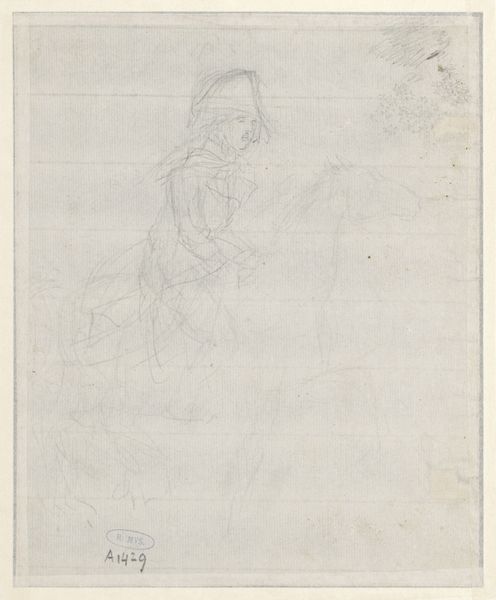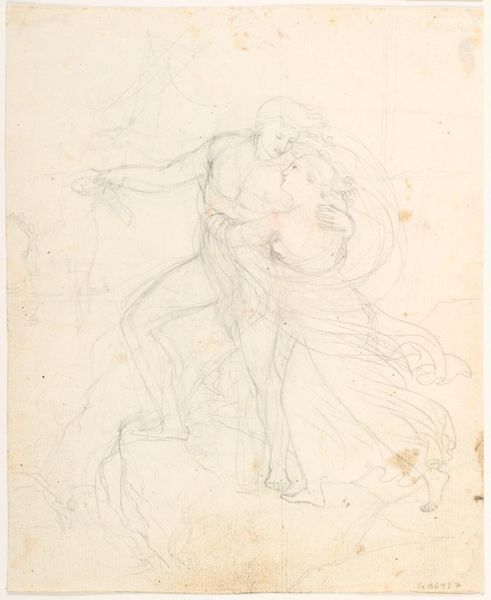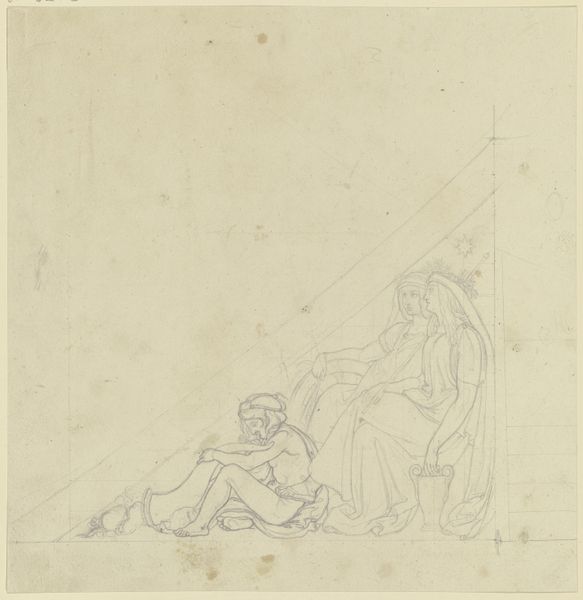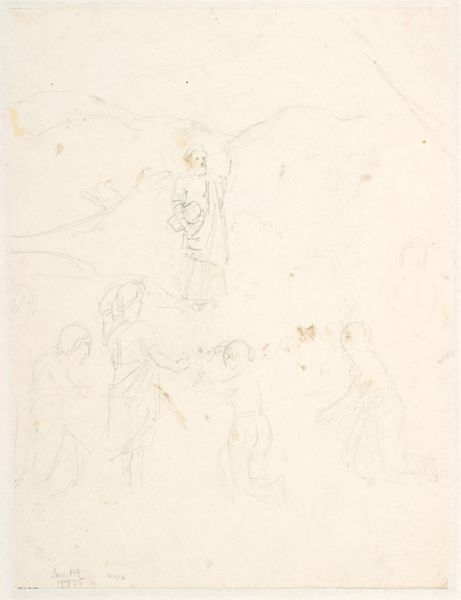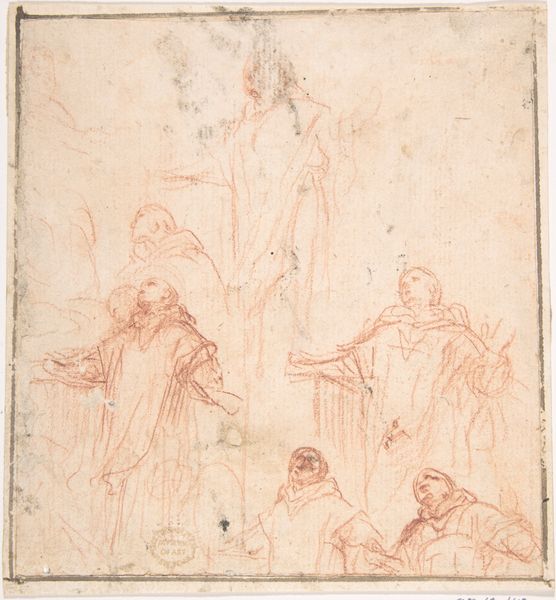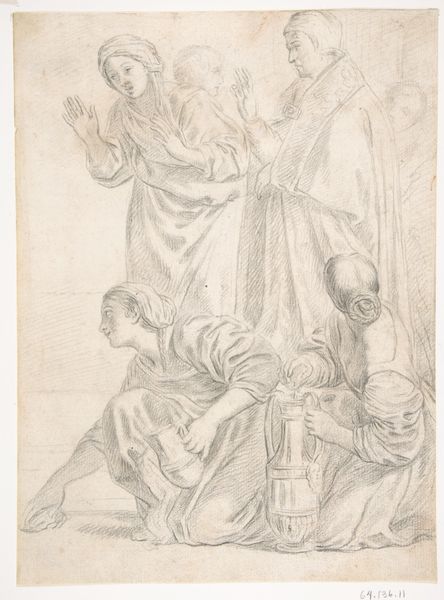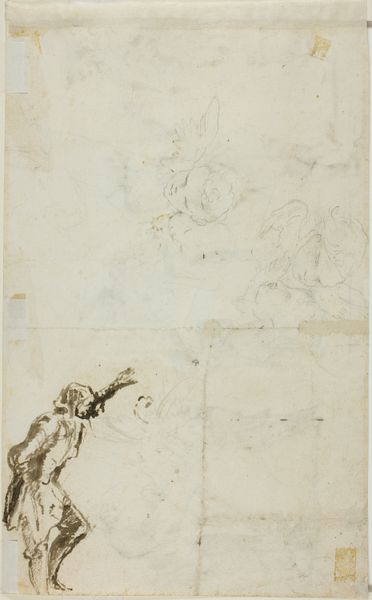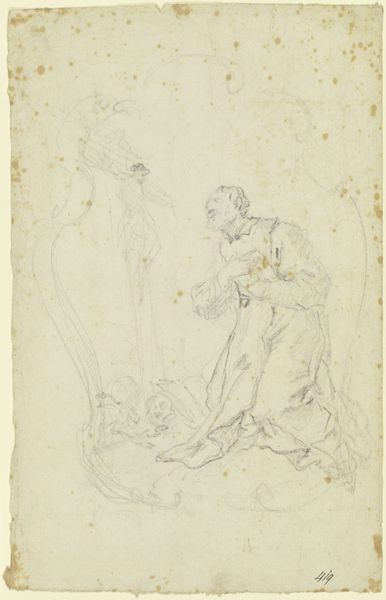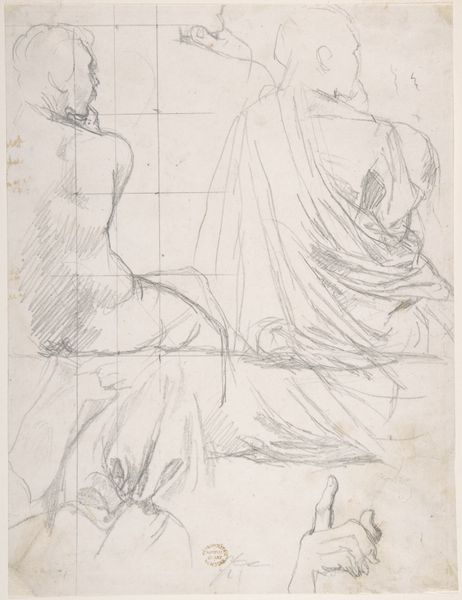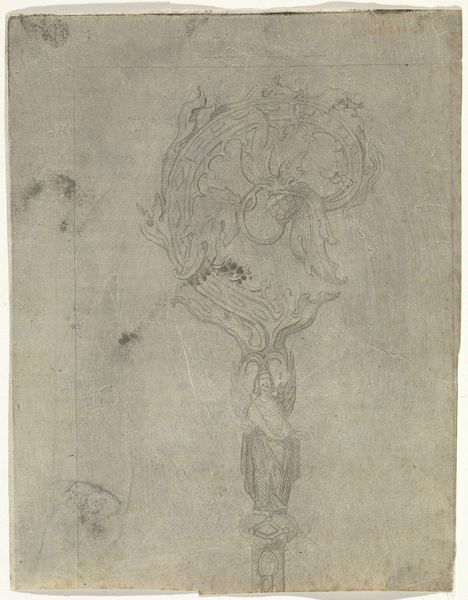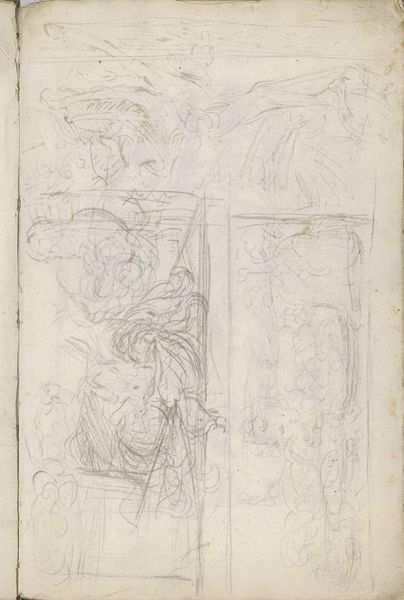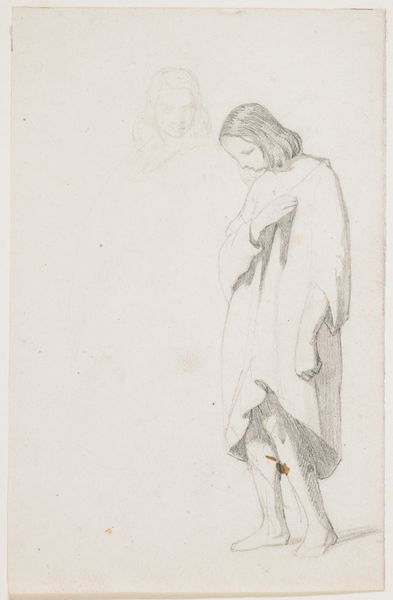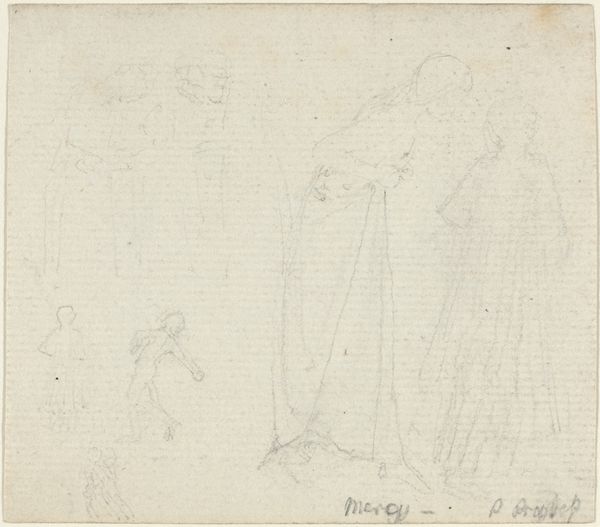
drawing, pencil
#
drawing
#
water colours
#
pencil sketch
#
landscape
#
figuration
#
romanticism
#
pencil
#
watercolor
Dimensions: 165 mm (height) x 143 mm (width) (bladmaal)
Curator: What catches my eye immediately about C.G. Kratzenstein Stub's "Skitse af en offerscene" from 1815, which roughly translates to "Sketch of a sacrificial scene," is the haunting lightness of touch, the barest whisper of pencil and watercolour on paper. Editor: Whisper is right. It feels less like a firm declaration and more like a fragile thought barely captured before it evaporates. I'm intrigued by that tentativeness, a sense of something not fully formed but powerfully suggestive. The sketch uses primarily pencil and watercolour. You get the sense he’s really wrestling with what this scene entails. Curator: Absolutely. You feel like you're eavesdropping on the birth of an idea, a private moment of artistic searching. Given its themes—sacrifice, devotion—this rawness intensifies the emotional impact. I am really taken in by its Romantic spirit. Editor: I am, too, though from a more technical standpoint. Looking closely, you can almost trace the artist’s hand movements, the pressure of the pencil on the page, the dilution of the watercolours. This is a fascinating object when thinking about labor because it emphasizes the means of production. I'd say the roughness contributes more than a highly finished oil painting to one's sense of empathy. What sort of world and marketplace made such intimacy so central? Curator: The emotional accessibility is interesting because it isn't sanitized; the romanticized idea of the art object takes a more concrete shape. In a way, Stub makes something universal visible. Do we witness private emotion better through less polished art objects? Editor: That makes me consider its incompleteness: the sketch is also of its time in that sketches could stand for "finished artworks" in the Romantic period as markers of originality that pushed against the grain of more commodified and polished outputs. You could say, then, that its appeal has an intimate quality that, in fact, speaks to broader aesthetic values. Curator: I couldn’t agree more. I think the magic lies precisely in this dialogue, the conversation it sparks between us and the artist, across time and medium. We gain a new awareness. Editor: Precisely. It makes us mindful of all the choices—historical and aesthetic—involved in creating something powerful, even in its unfinished state.
Comments
No comments
Be the first to comment and join the conversation on the ultimate creative platform.
